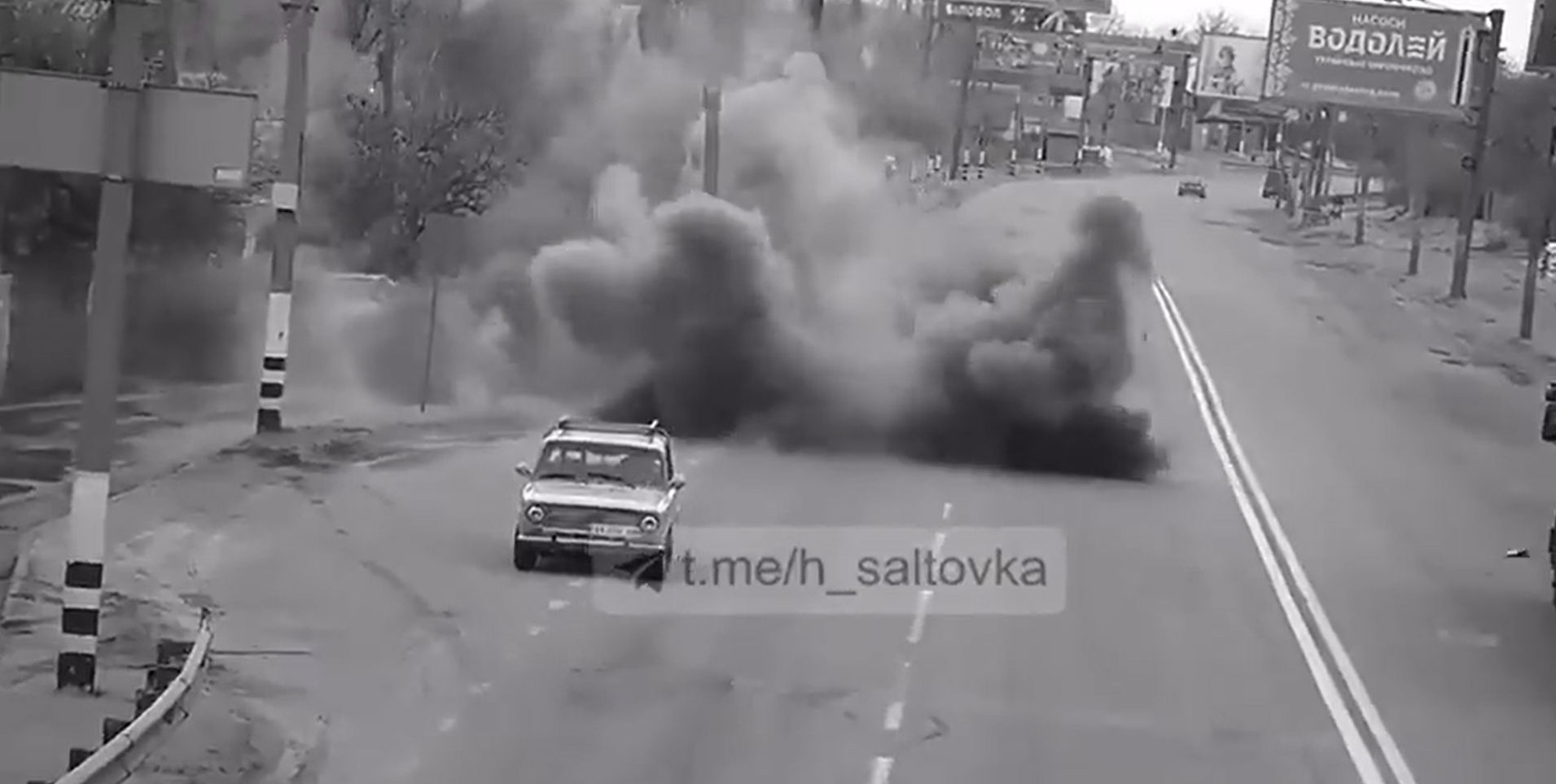A video uploaded on social media on Sunday displays what appears to be an explosion caused by cluster munitions in a civilian area in Ukraine’s Kharkiv.
The footage features a busy road in Pisuchyn. Seconds later, an explosion caused by an aerially dispensed submunition is seen on a building right next to the road. As the bomb hits the ground, a car stops, only to witness a series of bombs exploding on the road. The car’s owner then drives off. Later, a bomb laying on the road explodes, leaving a thick plume of smoke in the air.
What is a cluster munition?
A cluster munition, as the term suggests, is a non-precision weapon that disperses and falls over a large area. According to the 2008 Convention on Cluster Munitions, it is “designed to disperse or release explosive submunitions each weighing less than 20 kilograms, and includes those explosive submunitions.”
Also Read: Russia-Ukraine peace talks in ‘dead-end situation’: Vladimir Putin
These weapons are formulated to wound or kill humans over a large area of land, and to damage infrastructure and vehicles.
How are they launched?
Cluster munitions can be easily dropped from an aircraft or launched through a projectile installed in the flight. The spinning projectile helps the bomblets scatter as they travel through the air.
Also Read: Vladimir Putin vows war will continue as Russian troops mount in east
What happens when a cluster munition hits the ground?
While some bomblets explode the second they hit the ground, others lie on the ground without blowing up. These bomblets, often hidden and difficult to locate, pose a major threat to civilian lives on the ground, even after a military attack has stopped. According to the Convention on Cluster Munitions, “cluster munition remnants” include “failed cluster munitions, abandoned cluster munitions, unexploded submunitions and unexploded bomblets”.
Are cluster munitions legal to use?
Several nations that have accepted the Convention on Cluster Munitions are banned from using these bombs. Currently, there are 110 state parties that have ratified the convention and 13 other countries that have signed up for it. However, neither Russia nor Ukraine are signatories of the convention.
According to Amnesty International, a human rights NGO, the international humanitarian law forbids the use of weapons such as cluster munitions and considers its use a war crime, Reuters reported.







